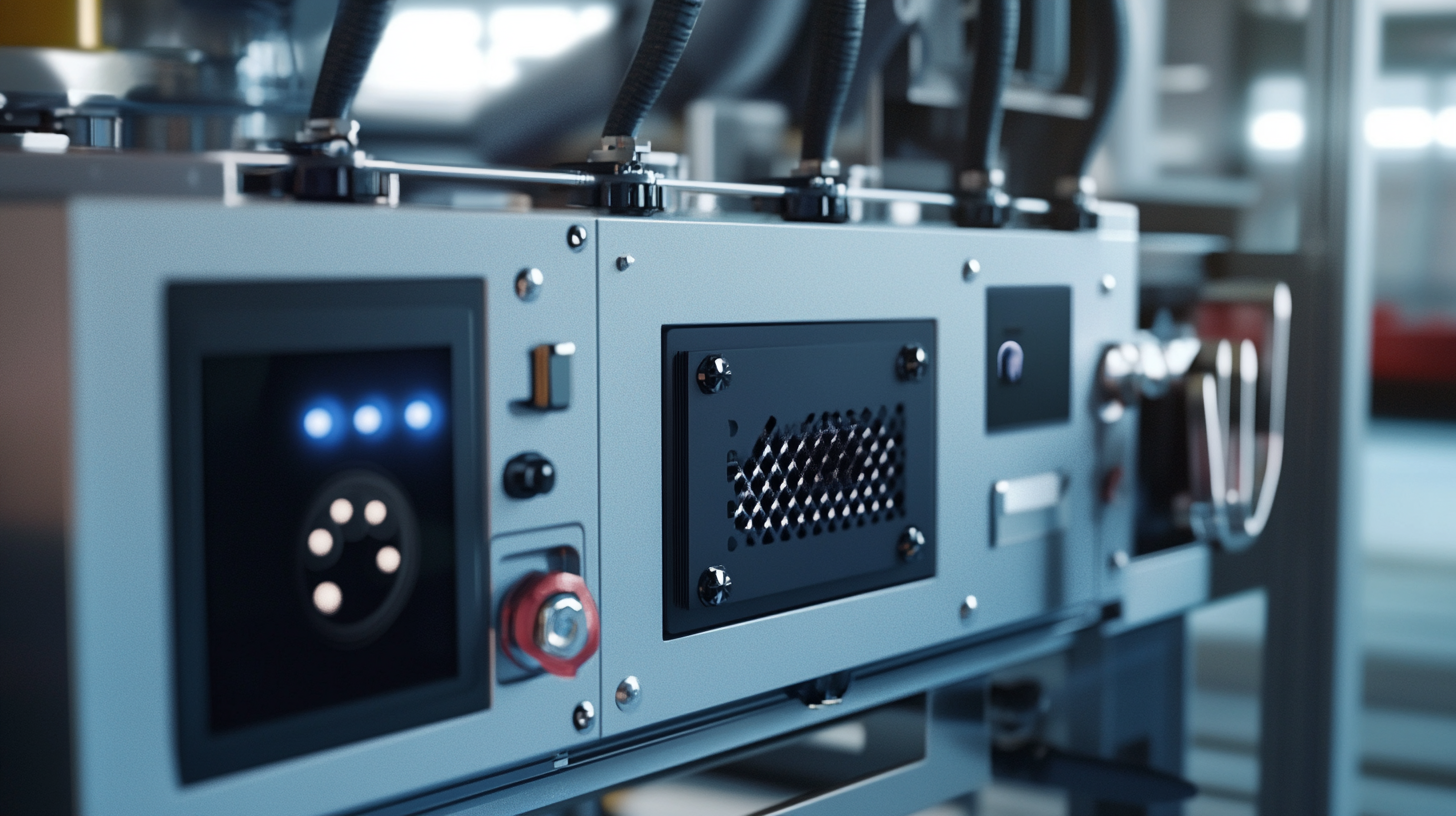In the evolving landscape of industrial manufacturing, the demand for high-quality Mig Co2 Welding Machines has surged significantly. According to a report by Grand View Research, the global welding equipment market was valued at approximately $19 billion in 2020 and is projected to expand at a compound annual growth rate (CAGR) of 5.3% from 2021 to 2028. This growth is largely driven by the increasing reliance on automated welding processes across various sectors, including automotive, construction, and shipbuilding. As global buyers seek to enhance productivity and improve quality, sourcing reliable and efficient Mig Co2 Welding Machines has become paramount. Understanding the nuances of this critical equipment not only aids in making informed purchasing decisions but also ensures compliance with international standards and operational efficiency. Therefore, unlocking the secrets to sourcing these machines is essential for manufacturers aiming to maintain a competitive edge in today’s dynamic marketplace.

As the global demand for MIG CO2 welding machines intensifies within modern manufacturing, understanding market trends and statistics becomes crucial for sourcing high-quality equipment. The laser welding market, for instance, was valued at approximately $2.36 billion in 2020 and is projected to reach $4.23 billion by 2035. This significant growth is indicative of the rising preference for advanced welding technologies across various industries, including automotive, medical, and electronics.
Moreover, the shielding gas market, integral to the welding process, was estimated at $3.03 billion in 2023 and is expected to grow at a compound annual growth rate (CAGR) of 5.5% through 2030. This trend reflects an increasing demand for precise and efficient welding solutions, driven by the need for high productivity and the adoption of cutting-edge methodologies. As manufacturers seek to enhance output and quality, the sourcing of reliable MIG CO2 welding machines becomes more pivotal, aligning with the broader trends in the industrial laser systems market, projected to grow at a CAGR of 13.8% from 2025 to 2034.
This pie chart represents the global market share distribution for MIG CO2 welding machines across different regions. North America and Asia are the leading markets, highlighting the importance of understanding regional demands in modern manufacturing.
When sourcing high-quality MIG CO2 welding machines, there are several key features that global buyers should prioritize to ensure they make a sound investment. First and foremost, welding performance is critical. Look for machines that provide consistent arc stability and can handle various material thicknesses without compromising on the quality of the weld. An inverter-based design often offers improved efficiency, portability, and ease of use for both novice and experienced welders.
Another essential aspect is the machine's versatility. Models that offer multiple welding processes, such as MIG, TIG, and Stick, can significantly enhance productivity and flexibility in various projects. Additionally, consider the machine's durability and weight, especially if portability is a factor. Compact and lightweight designs can facilitate easier transport and storage, making them ideal for both workshop and field uses.
Lastly, easy-to-use controls and adjustable settings are vital for achieving desirable results. User-friendly interfaces enable welders to make quick adjustments while minimizing the risk of operational errors. As you evaluate available options, prioritizing these features will help ensure a successful purchase that meets your welding needs effectively.
When sourcing high-quality MIG CO2 welding machines, assessing the reliability of manufacturers is a critical step for global buyers. The evaluation process should begin with a thorough examination of the supplier’s credentials and reputation in the industry. Researching customer reviews and testimonials can provide insight into their track record, while certifications such as ISO standards can indicate a commitment to quality and safety. Engaging with industry professionals and forums can also yield valuable recommendations on reputable suppliers.
In addition to checking credentials, it's essential to evaluate the manufacturer’s production capabilities and technological advancements. A reliable welding equipment manufacturer should possess modern machinery and a skilled workforce. Requesting to visit the production facility, if possible, can allow you to observe their operations and quality control measures firsthand. Furthermore, establishing clear communication channels with the supplier can foster a better understanding of their practices and lead to a stronger partnership. A proactive approach in the assessment phase will ensure you choose a manufacturer that meets both your quality expectations and operational needs.

In recent years, the landscape of MIG CO2 welding technology has transformed dramatically, facilitated by cutting-edge innovations that enhance performance and efficiency. The integration of advanced materials and techniques, such as automation and precision engineering, significantly boosts the capabilities of MIG CO2 welding machines. This evolution not only meets the increasing demands for high productivity but also emphasizes the need for reliability in industrial applications. Manufacturers are now focusing on developing machines that offer greater control over heat input and welding speed, resulting in improved weld quality.
Moreover, as global markets become more competitive, the adoption of modern welding technologies is crucial for enhancing operational efficiency. The growing trend towards laser welding, particularly in sectors like automotive and electronics, is a testament to this shift. With the projected growth of the laser welding market, it is evident that industries are seeking solutions that deliver faster and more precise results. Moreover, the emphasis on environmentally friendly operations underlines the relevance of welding innovations in the broader context of sustainable manufacturing. By leveraging these technological advancements, global buyers can unlock the full potential of MIG CO2 welding machines, ultimately leading to improved productivity and profitability in their operations.

When sourcing MIG CO2 welding machines, one of the most critical considerations for global buyers is the balance between cost and quality. According to a report by IBISWorld, the global welding equipment market is projected to reach $32 billion by 2025, driven by industries such as construction, automotive, and shipbuilding. As companies strive to reduce operational costs, the temptation to opt for lower-priced equipment can lead to subpar performance and increased maintenance costs.
Investing in high-quality welding machines may seem initially more expensive, but the long-term savings and enhanced productivity cannot be understated. A study from the American Welding Society highlights that using advanced MIG CO2 welding technology can improve weld quality by up to 30%, reducing waste and rework. Additionally, quality equipment often comes with better warranties and support, which can significantly lower the total cost of ownership. By prioritizing quality, buyers can ensure their welding operations remain efficient and competitive in an ever-evolving market.
